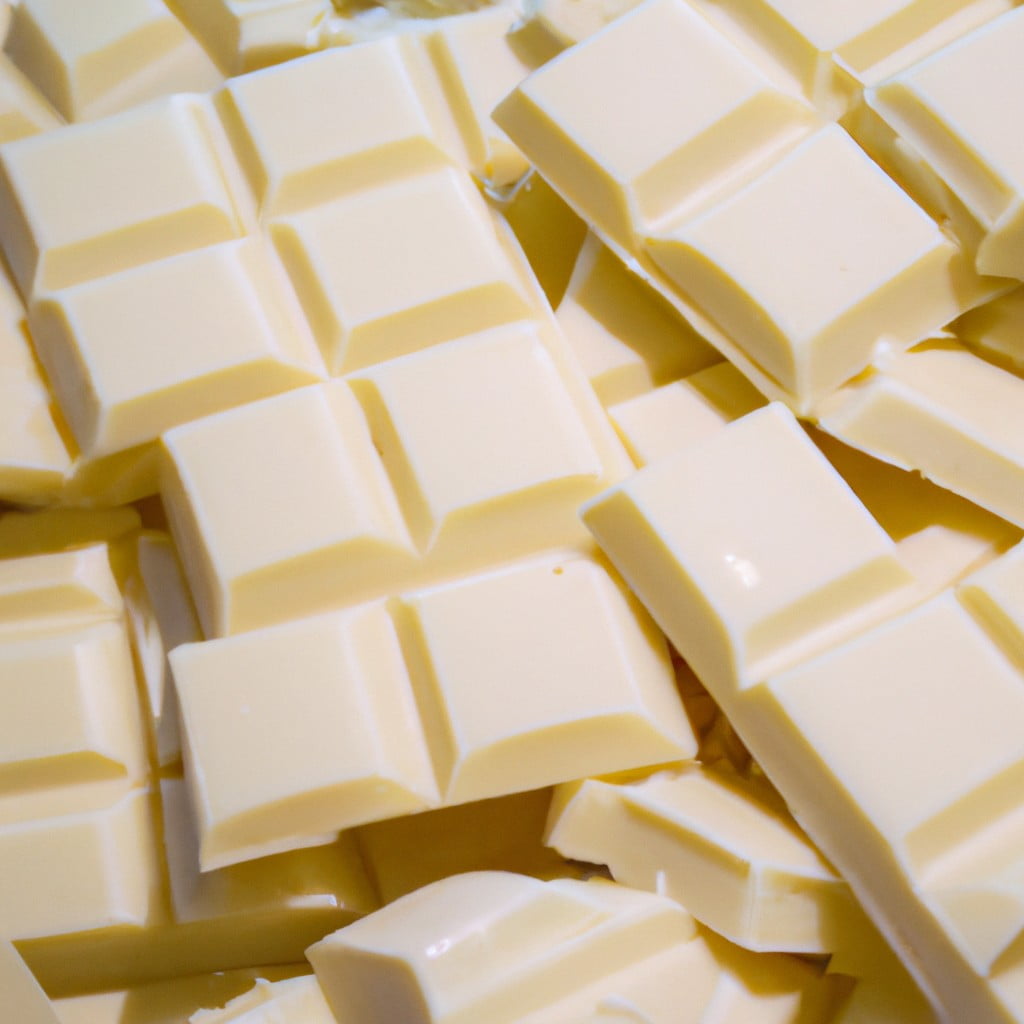This article provides a comprehensive understanding of white chocolate, discussing its origins, production process, and tips for its best enjoyment.
Key takeaways:
- White chocolate originated in Switzerland as a way to use excess cocoa butter.
- It is made from cocoa butter, sugar, and milk solids or powder.
- White chocolate must contain at least 20% cocoa butter to be genuine.
- It is versatile in cooking and baking, pairing well with fruits and balancing tartness in recipes.
- White chocolate has a creamier texture and sweeter taste compared to dark and milk chocolate.
Inside
The History of White Chocolate

Originated in Switzerland during the 1930s as a way to make use of excess cocoa butter.
Developed by the Nestlé company, initially sold in Europe before expanding to the U.S.
Gained popularity due to its creamy texture and sweet, mild flavor profile.
Since its invention, it has become a staple in an array of confections and desserts worldwide.
Composition of White Chocolate
Unlike its darker counterparts which contain cocoa solids, white chocolate is made from cocoa butter, a pale yellow edible cocoa fat that imparts a smooth texture and rich flavor. Sugar adds sweetness, while milk solids or powder contribute to the creamy texture.
In some places, lecithin from soybeans may be added as an emulsifier to maintain a stable blend of ingredients.
Cocoa butter must be present in a significant amount for a product to be considered genuine white chocolate. For instance, in the United States, the Food and Drug Administration requires at least 20% cocoa butter, 14% milk solids, and no more than 55% sweeteners in white chocolate formulations.
The high cocoa butter content means white chocolate melts easily and has a luxurious, velvety mouthfeel, making it ideal for ganaches, truffles, and as a coating for confections. Variations of white chocolate can exist; some may include natural or artificial flavors such as vanilla to enhance the subtle chocolate taste derived from the cocoa butter.
Regulations On White Chocolate
To qualify as white chocolate, a product must adhere to specific standards laid out by food authorities. In the United States, the FDA requires at least 20% cocoa butter, 14% milk solids, and no more than 55% sugar. Unlike dark and milk chocolate, it contains no cocoa solids, which contribute to the chocolate flavor and color in other varieties.
European regulations mandate at least 20% cocoa butter, 14% dry milk solids, and 3.5% milk fat. These standards ensure consistency in quality and taste across products labeled as white chocolate.
Additionally, because of its unique composition, white chocolate melts at a slightly lower temperature than milk or dark chocolate, making it sensitive to high heat. Quality control during production is crucial to maintain the desired texture and flavor profile.
Variations in regulations may occur globally, with different countries possibly having their own standards for what constitutes white chocolate. Producers must comply with these regulations to market their products legally within these regions.
Uses of White Chocolate in Cooking and Baking
White chocolate offers a creamy and smooth texture, making it a versatile ingredient in desserts and confections. With its subtle flavor profile, it pairs well with a wide range of ingredients, including fruits like raspberry and citrus, and can be used to soften the intensity of dark chocolate. It’s a favored choice for ganaches, mousses, and frostings because of its rich consistency.
White chocolate can be melted down for dipping or drizzling, setting up nicely due to its cocoa butter content. In baking, its sweetness can balance out the tartness in recipes like lemon bars. It can be chopped into chunks for cookies or shaved over desserts for a decorative finish. Chefs also incorporate white chocolate into savory dishes, using it to create unique sauces and glazes that complement spices and herbs.
White Chocolate Vs. Dark Chocolate and Milk Chocolate
White chocolate’s notable absence of cocoa solids gives it a creamier texture and sweeter taste compared to its darker counterparts. It contains cocoa butter, which imparts a melt-in-your-mouth quality, distinct from the robust flavor profile found in dark chocolate that includes both cocoa solids and cocoa butter.
Milk chocolate, sitting between the two, incorporates milk powder or condensed milk, offering a balance of sweetness with a hint of chocolatey bitterness. Each type of chocolate offers a unique mouthfeel and flavor profile, making them suitable for different culinary applications and personal taste preferences.
Dark chocolate is often favored for its health benefits and intense flavor, while milk chocolate is widely enjoyed for its smoothness and comforting sweetness. White chocolate, on the other hand, is an ideal choice for those who prefer confections that are less bitter and rich in buttery vanilla notes.




